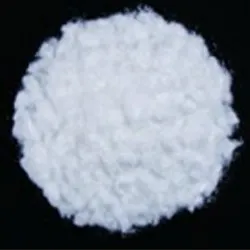
bread emulsifier
Exploring the Role of Bread Emulsifiers in Baking
Baking, an age-old art, is as much a science as it is a craft. Among the multitude of ingredients that contribute to a loaf of bread, emulsifiers are often the unsung heroes in achieving the desired texture, volume, and freshness. Understanding the role of bread emulsifiers can elevate both home baking and industrial production.
Emulsifiers are substances that help mix ingredients that usually do not blend well, such as oil and water. In the context of bread, they play a crucial role in stabilizing the dough, enhancing its ability to retain gases produced during fermentation. This results in a lighter, airier crumb structure. Common emulsifiers used in bread-making include lecithin (derived from soybeans or egg yolks), mono- and diglycerides, and various enzyme-based emulsifiers.
One of the primary benefits of using emulsifiers in bread is dough stability. During the mixing and fermentation processes, the dough is subjected to mechanical forces. Emulsifiers can reinforce the gluten network, which is essential for capturing and holding the gas bubbles produced by yeast. This creates a more elastic and extensible dough, preventing it from breaking and ensuring a uniform rise.
Moreover, emulsifiers contribute to the overall volume of the bread. By improving gas retention, they allow the bread to rise more effectively, resulting in a loaf that is not only taller but also has a better texture. This is particularly important for commercial bakers, where uniformity and quality are paramount. Emulsified bread tends to have a softer crust and a more tender crumb, making it appealing to consumers.
bread emulsifier

Another significant advantage of using emulsifiers is their effect on the shelf life of bread. Bread can stale quickly due to moisture loss and the crystallization of starches. Emulsifiers help retain moisture, thereby keeping the bread fresh for a longer period. They achieve this by creating a barrier that slows down the staling process, allowing consumers to enjoy their bread for days after purchase.
Furthermore, emulsifiers can enhance the flavor and mouthfeel of bread. By creating a finer crumb texture, they allow for a more pleasant eating experience. The subtle interactions between fat and water that emulsifiers facilitate can also improve flavor distribution, making the bread taste richer and more satisfying.
While the use of emulsifiers is common in commercial baking, they are also valuable in home baking. For amateur bakers, incorporating natural emulsifiers, such as egg yolks or yogurt, can yield impressive results. These ingredients not only improve texture and moisture retention but also add unique flavors to homemade bread.
In conclusion, bread emulsifiers play an essential role in the baking process. From enhancing dough stability and volume to prolonging freshness and improving flavor, their contribution is significant. Whether in a bakery or a home kitchen, understanding and utilizing emulsifiers can lead to superior bread that delights the palate and satisfies the appetite. As bakers continue to experiment and innovate, the importance of these ingredients in achieving the perfect loaf remains undeniable.
-
Aluminum Hydroxide: Quality Gels & Dried Gel AntacidNewsAug.31,2025
-
Buy High-Quality Trichloroisocyanuric Acid for Sale | TCCA 90% SupplierNewsAug.30,2025
-
Pure Sodium Dichloroisocyanurate Dihydrate | Powerful DisinfectantNewsAug.29,2025
-
Industrial Chemicals: Quality & Purity for Every IndustryNewsAug.28,2025
-
Nitrile Rubber Honoring Strict Production StandardsNewsAug.22,2025
-
Aspartame Ingredients Honoring Food Safety ValuesNewsAug.22,2025
-
Fertilizer for Balanced Plant NutritionNewsAug.22,2025
Hebei Tenger Chemical Technology Co., Ltd. focuses on the chemical industry and is committed to the export service of chemical raw materials.
-

view more DiethanolisopropanolamineIn the ever-growing field of chemical solutions, diethanolisopropanolamine (DEIPA) stands out as a versatile and important compound. Due to its unique chemical structure and properties, DEIPA is of interest to various industries including construction, personal care, and agriculture. -

view more TriisopropanolamineTriisopropanolamine (TIPA) alkanol amine substance, is a kind of alcohol amine compound with amino and alcohol hydroxyl, and because of its molecules contains both amino and hydroxyl. -

view more Tetramethyl Thiuram DisulfideTetramethyl thiuram disulfide, also known as TMTD, is a white to light-yellow powder with a distinct sulfur-like odor. It is soluble in organic solvents such as benzene, acetone, and ethyl acetate, making it highly versatile for use in different formulations. TMTD is known for its excellent vulcanization acceleration properties, which makes it a key ingredient in the production of rubber products. Additionally, it acts as an effective fungicide and bactericide, making it valuable in agricultural applications. Its high purity and stability ensure consistent performance, making it a preferred choice for manufacturers across various industries.





